First ride review: Skarper e-bike conversion kit. After 3 years in development and £12.8m of investment, it's finally ready
With an investment of £12.8m, 3 years to engineer and involvement from Red Bull Advanced Technologies and Sir Chris Hoy. Was it worth the wait?
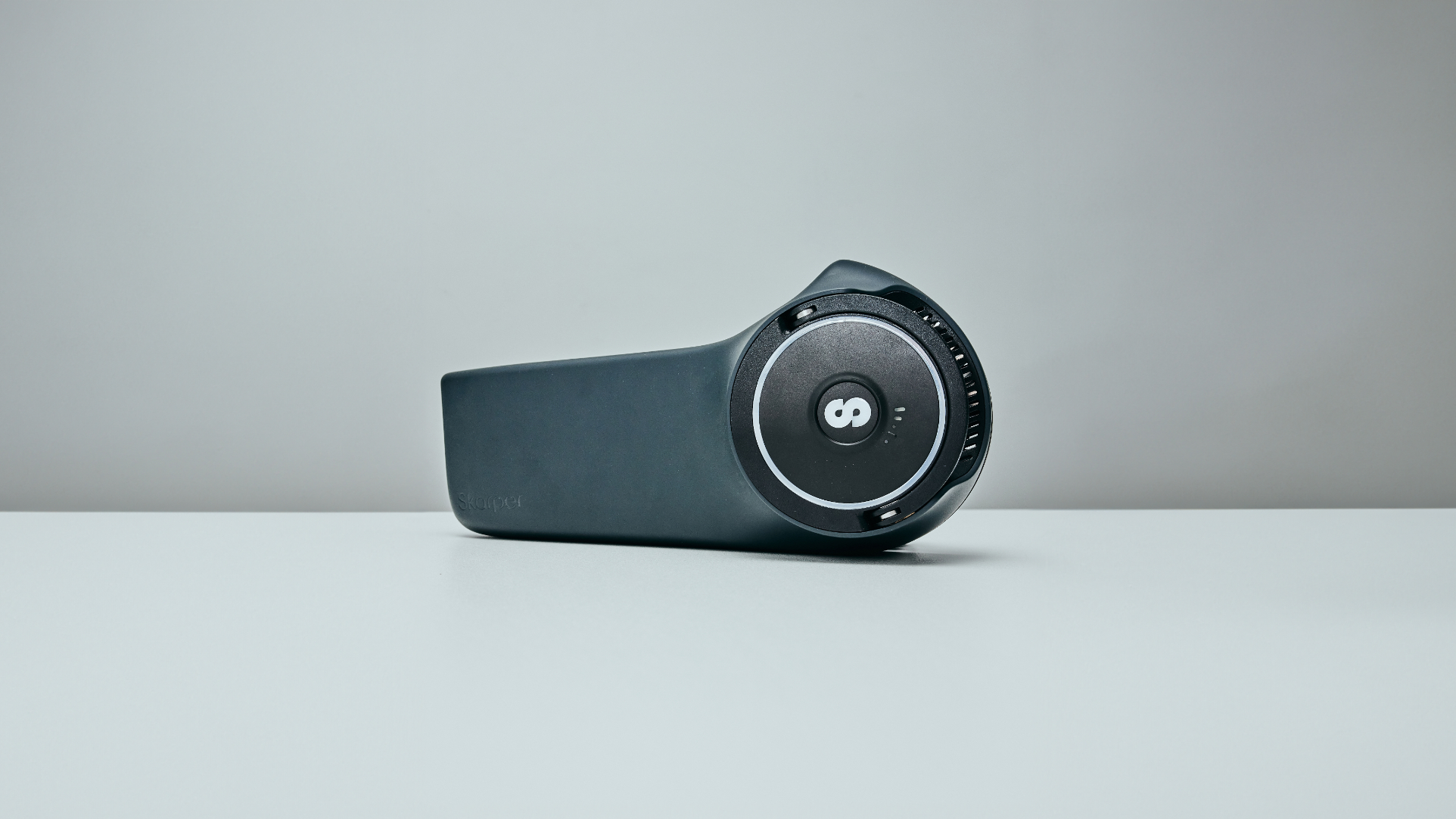
It is a biblically wet London afternoon, forget Hugh Grant and Andie MacDowell in Four Weddings and a Funeral. I am picking my way through a grey and cold Camden Town, having to choose if I want to be splashed by taxis or have my eyes poked out by umbrella-wielding tourists. I am heading for a quiet mews just off the main thoroughfare and away from the famous market to visit Skarper.
Skarper’s e-bike conversion kit has been in development for three years but will soon be available to the general public. To make it possible, the company teamed up with Red Bull Racing’s Advanced Technologies department and raised £12.8m of investment. Skarper also has the backing of Olympic gold medalist Sir Chris Hoy, who devastatingly announced his terminal cancer diagnosis this week.
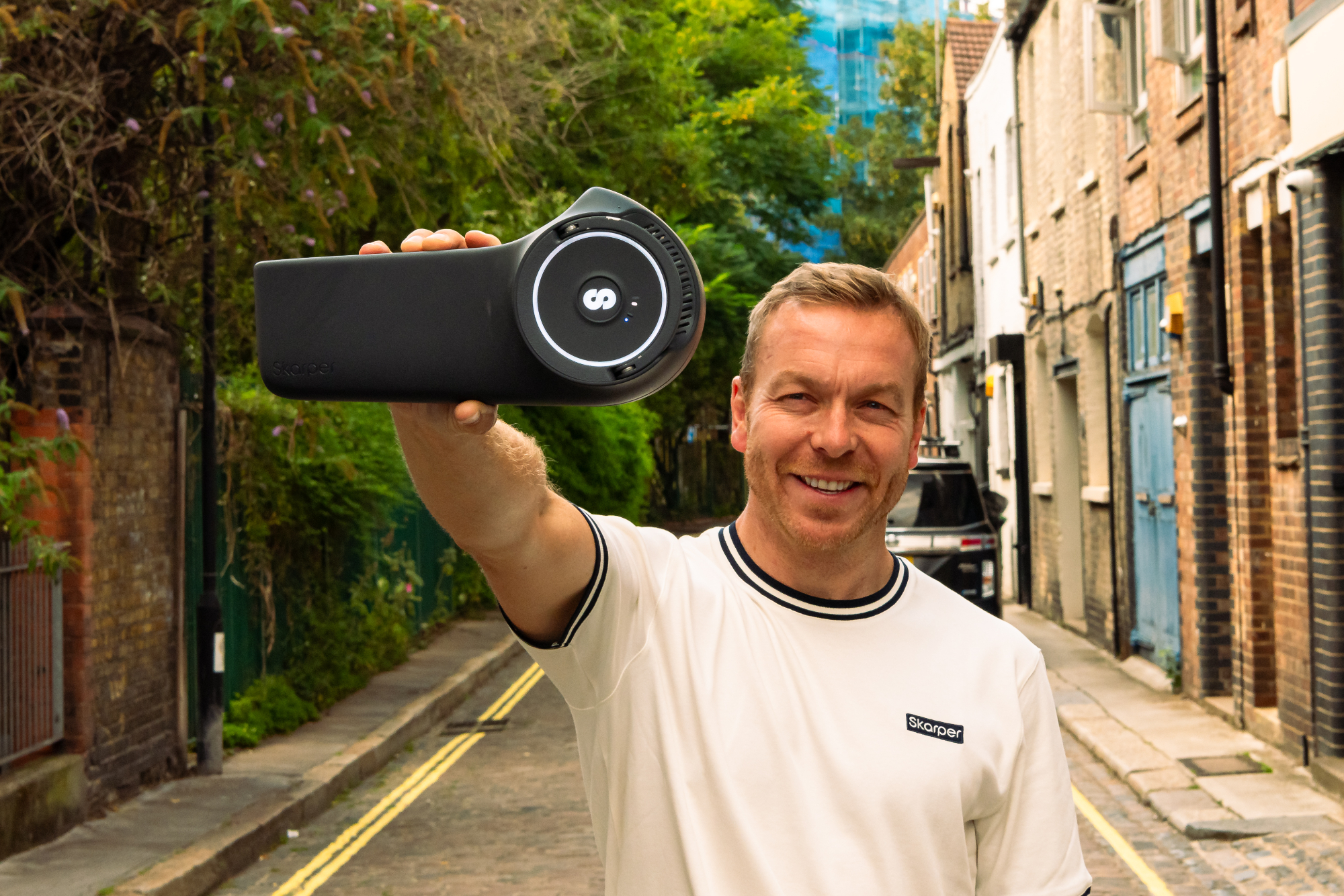
Sir Chris Hoy, one of the first to invest in Skarpers e-bike conversion kit idea
As I step into Skaper's unassuming office, I am immediately greeted with the repetitive hammering of a testing machine. This sets the tone for our meeting, presenting Skarper as a company spending its hard-earned investment focusing on its engineering.
While the final production models will be completed in China, the design and engineering are all done in the UK. There is not a single ‘off-the-shelf’ component, an impressive feat considering the relatively small size of the company. As I’m shown around, I spot test rigs everywhere, some recognisable, like high-end turbo trainers stripped and providing data alongside a team of engineers hard at work. The result is an e-bike conversion kit with a very unique design.
Construction
The Skarper is suitable for mounting on any bicycle chainstay and is driven using a geared disc rotor. This small drive unit can produce up to 45 Nm of torque, while housing everything it needs to operate, including a 240wh battery.
At 4.5kg, with an added 600 grams for the DiskDrive® brake rotor, Skarper is double the weight of the Swytch Bike Air Kit we tested last year, but there are no wires or batteries taking up valuable handlebar or frame space. The big reason for this weight difference is mainly down to battery size; Swytch uses a tiny 90Wh battery, which weighs only a kilogram. However, most lightweight integrated e-bike systems add between four and five kilos, so the weight of the Skarper isn’t at all unreasonable.
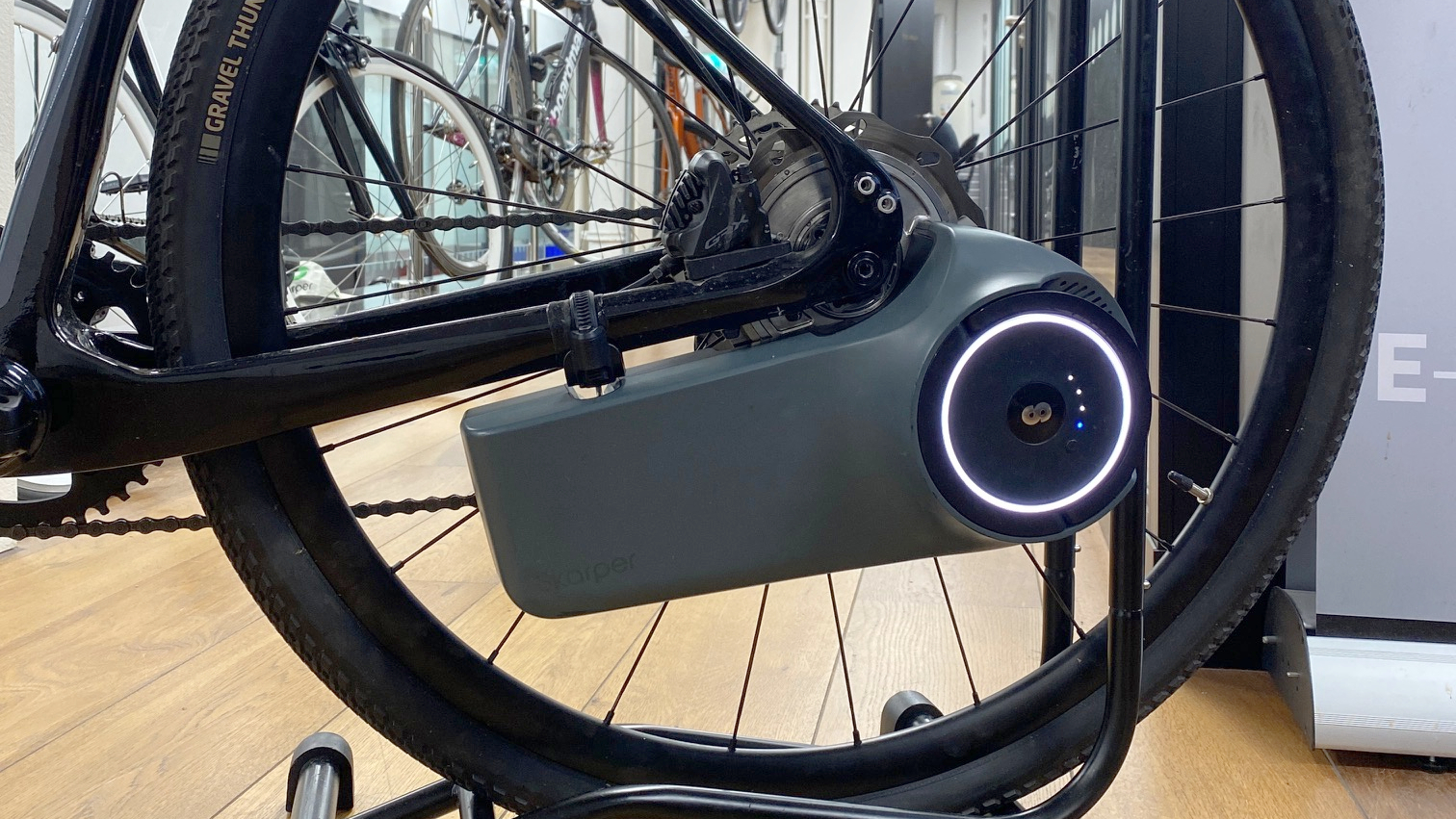
Skarper is suitable for mounting on any bicycle chainstay and driven using Skarpers DiskDrive® brake rotor
My first question to Alastair Darwood, co-founder and Chief Innovation Officer at Skarper is, why the disc brake? Was there not a concern that you were playing with a bike's primary safety device?
The latest race content, interviews, features, reviews and expert buying guides, direct to your inbox!
Alastair replied with a simple and well-thought-out reasoning.
“With so many ‘standards’ on bicycles it is nearly impossible to narrow down a single area without adding complexity,” he said. “The only real area left on a bicycle that has a single standard is the brake mount, with all bicycle manufacturers having to design around SRAM or Shimano’s tolerances. This means no matter what bike you own, you can fit Skarper”.
In response to any possible effect on rider safety, Alastair says "Bicycle brands have to do a lot of fatigue and clearance testing in this area of the frame. With its low torque output and weight, Skarper has little effect on strength or braking performance".
"The only area left on a bicycle that has a single standard is the brake mount"
Alastair Darwood, Co-Founder and Chief Innovation Officer of Skarper
In January of this year, Skarper announced it had been working with Red Bull Advanced Technologies. Skarper is not the first bicycle brand to have worked with the engineering arm of the Red Bull Racing F1 team. BMC redesigned its time trial and Teammachine R with them and both launched last year.
“Red Bull helped to finalise the gearbox design, helping to improve reliability and make the click-on system faultless,” said Darwood. And it’s an impressive system. Held in place entirely by the DiskDrive® brake rotor gearing and a small clip placed on the chainstay, once removed you’d never know that it had been there.
Another neat solution to reduce complexity is a single cadence sensor mounted to the crank arm to allow the system to register movement. This makes it simple to use across multiple bikes and removes the need for wiring or a change of bottom bracket. This cadence sensor, combined with speed and torque sensors built into the unit, processes the data to gauge how much assistance is required.
The Skarper unit features two-speed settings, Turbo and Eco, which are selected manually on the unit before you get on and ride. The system can be switched off entirely whilst in motion by backpedalling three times. It’s a nice feature if you are only looking for some support on the hills. Skarper claims the Eco mode will produce around 50km of range from the built-in 240wh battery.
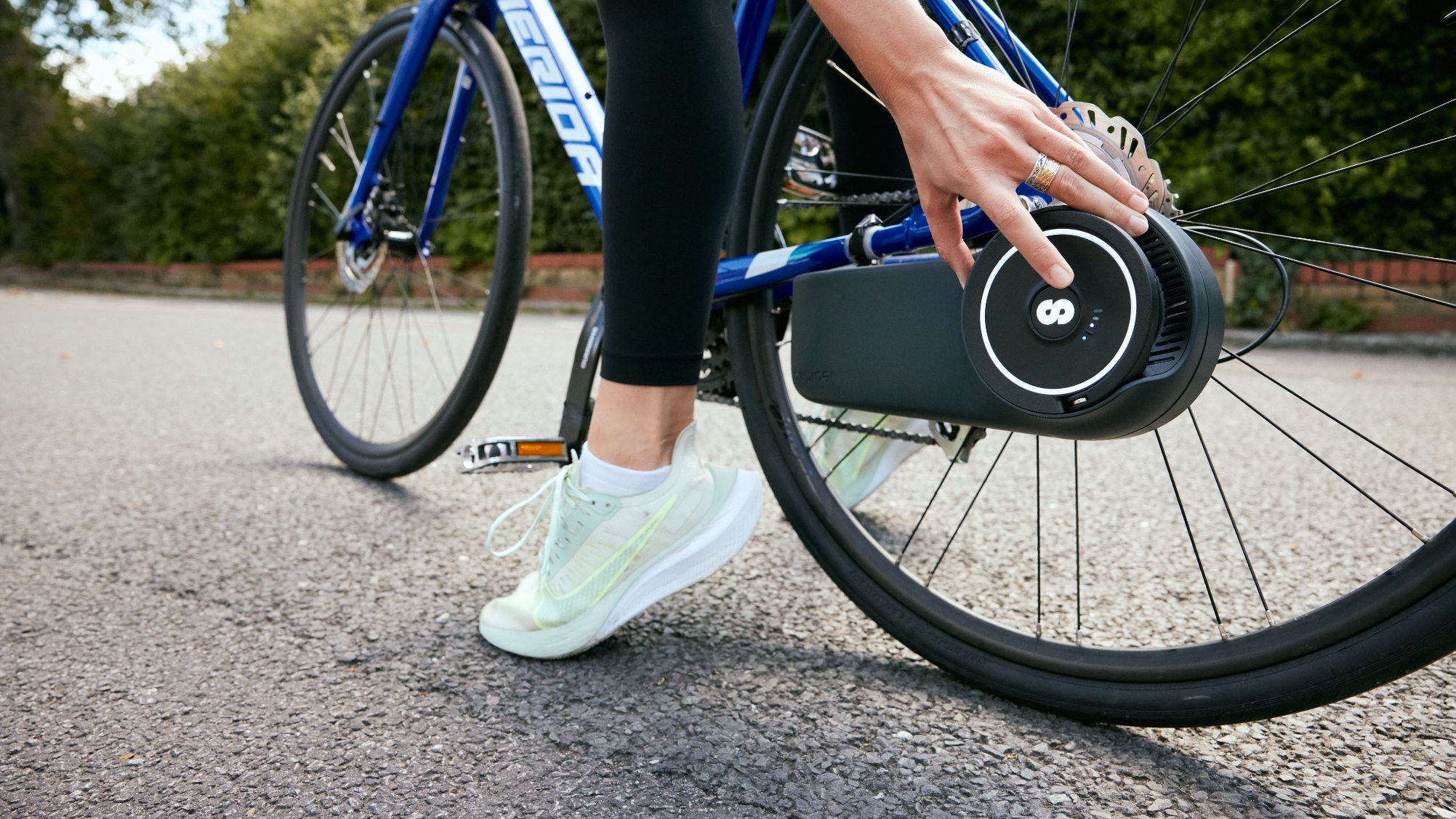
Switching modes on the Skarper unit requires the rider to manually push a button on the unit
First Ride Review
While the rain put a bit of a damper on my test ride plans, my bike was fitted with a mudguard and I was kindly lent a pair of waterproof trousers. I then set out for a short ride through the quiet residential roads of Camden and up towards Holloway Road, expertly guided by Skarper Co-Founder Uri Meirovich.
Setting off in Turbo mode, I instantly noticed how punchy the Skarper unit is. With the relatively low torque output number compared to Bosch or Shimano systems, it felt like a decent shove that didn't tail off, even when nearing the speed limit. London’s not the hilliest of places, so it was hard to assess if that was because I was in Turbo on flat terrain. Would that feeling translate to hills too?
We headed up the A503 towards Finsbury Park and Holloway Road, which I checked on Strava, has a 500m section at 3.5% average. To many seasoned cyclists, you wouldn’t notice this but for non-cyclists on an unassisted bike, this is a lump in the road many could do without. This section included several stops for traffic lights and buses and I didn't notice any drop in performance. The system stayed consistent and strong, with great acceleration away from those lights.
Electric bike conversion kits
E-bike conversion kits have in recent years seen a spike in popularity especially among couriers and food delivery riders. They offer low entry costs and can be fitted to nearly any bike. At Cycling Weekly we only recommend kits that we have tested and can be purchased from trusted retailers offering after-sales support. In the past, we have consulted experts in the field to discuss what to look for and what to avoid. It is so important to make sure you purchase a kit that has been tested and meets all the required standards for sale in your region.
With any e-bike system, the real test is how it performs once you hit that 15.5mph assistance limit. While the drop-off in assistance was noticeable, it was nothing like the ‘pedalling through mud’ feeling of older Bosch CX units. For comparison, it was akin to the Fazua Ride 50/Evation unit I have on my personal e-bike. It’s extremely smooth and with a decent tapering off, taking you briefly over the limit, to ease you into being under your own steam. In essence, it’s like riding a normal bike with very little, if any resistance.
Dropping down to Eco mode, as you would expect, offers considerably less assistance. I can only describe it as a ‘barely there’ feeling. If I was going to nitpick a bit, the Turbo mode is very strong and I am not sure it needs to be quite so powerful, as a slightly increasing assistance level in Eco mode could strike a better balance. It might be nice to see a third or dynamic mode as standard. That said, with the lack of varied terrain to tackle in London it’s hard to give a full overview of the overall assistance levels. For this, I’d need a longer testing period.
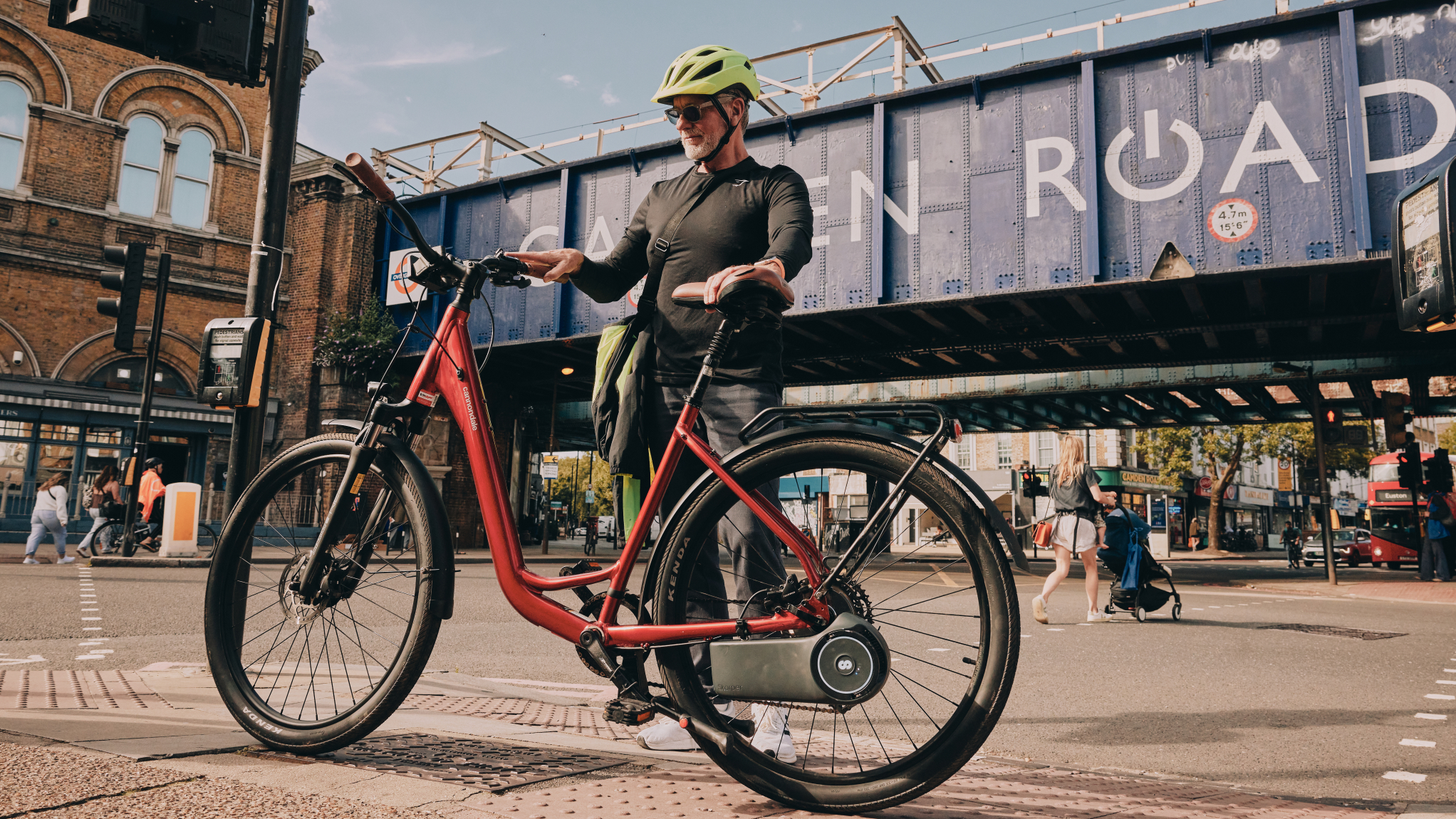
My test ride was nothing like this beautiful london day. The rain put a damper on my photo taking opportunities
Value and conclusions
When compared to other e-bike conversion kits, Skarper is one of the more expensive options at £1,495 (£1895 to upgrade to the dual bike kit). The obvious comparison is to the Swytch Bike Kit, which with its largest battery option, comes in well under half the price at £599.
That said, there are very few e-bikes at this price point, and certainly not ones that would be as light or refined as Skarper. Its nearest full bike rival would be something fitted with a Mahle X35 hub, with these typically starting at around £2,600.
As a rear wheel drive kit, Skarper offers better potential value and performance over other conversion kits, specifically front-wheel drive options. With significant effects on handling, front wheel drive kits are far too often poorly controlled in how and when they apply power, becoming a huge safety issue. Think about going around a roundabout or sharp corner in a front-wheel-drive car at speed and you’ll understand what I mean. Furthermore, fitting a whole-wheel conversion kit generally means a significant downgrade in the specification. The other option would be to have the e-hub rebuilt into a quality rim, but that's a whole heap of hassle and expense. In contrast, the simplicity of Skarper makes it a proposition that I think could be very attractive to many seasoned cyclists.
Time will tell if the system is durable and reliable. I quizzed Alastair and Uri heavily on this, as I had first-hand experience being an early adopter of the Fazua Evation systems and how difficult that had been. Both reassured me there is a good plan in place including, a small but highly trained UK dealer network and multiple ways of contacting Skarper directly. Importantly they are confident in their product, offering a 2-year warranty, which is double that of most e-bike manufacturers.

The rain stopped any chance of me getting riding photos, but this interesting selection of artwork in the Skarper office toilet shows engineers have a softer side
Verdict
After a short and wet ride, I believe the Skarper system has plenty of legs, with its performance promising. Skarper has certainly solved a lot of the compatibility issues with many e-bike conversion kits. While the cost is undeniably high, I think this will be justified once durability has been confirmed. To that point I have requested a production version to do a long-term review, so watch this space.
Early pre-orders of Skarper will ship before the year is out, of which all units are sold out. I am told ‘stock’ will be available early in the new year for UK customers only, pre-orders or open for that delivery window now.
Like many, Matt began his bicycle industry journey on the spanners at his local bike shop. After spending his youth mountain biking, he was inspired to embrace gravel during his tenure with Evans Cycles' in-house brands, Pinnacle and Hoy Bikes. Recognising the evolving industry, Matt eagerly seized the chance to become an E-bike designer, winning several awards with the E-bike brand Cairn Cycles.
These days, Matt is likely to have a toddler sitting shotgun or off the beaten track somewhere on the South Downs.